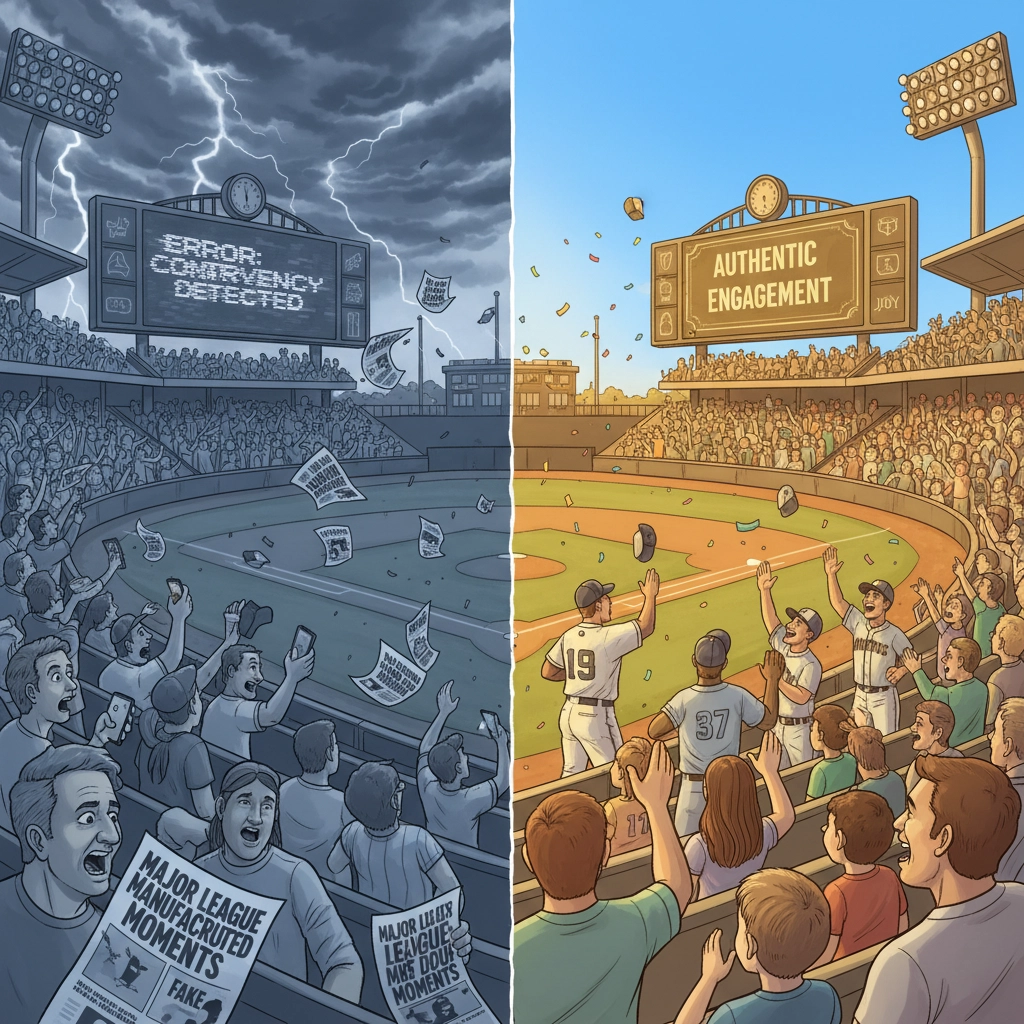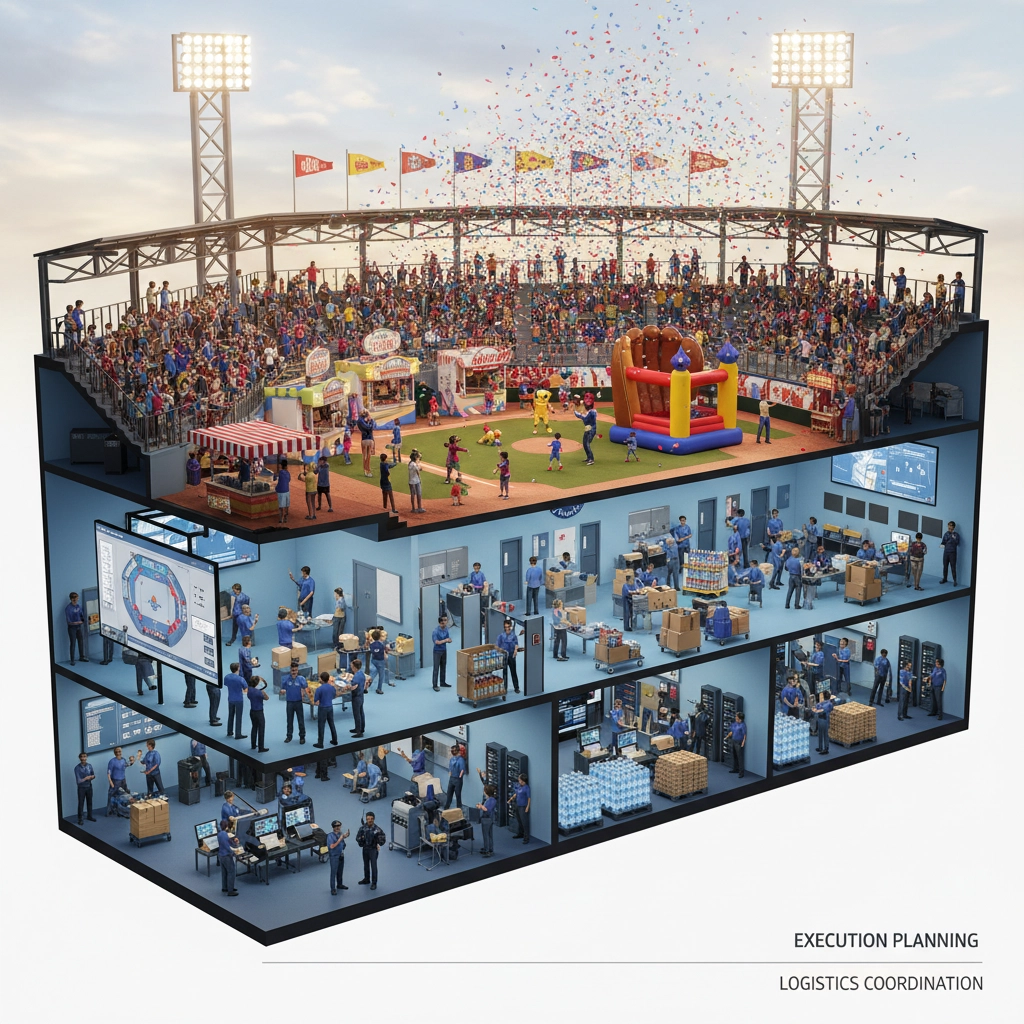
18 Sep 7 Mistakes You're Making with Minor League Sports Advertising (And How to Fix Them)
Minor league sports advertising is a unique beast. You're competing against major leagues with massive budgets while trying to fill seats and build brand loyalty in smaller markets. The good news? Minor league teams have advantages the big guys don't: intimate venues, affordable family entertainment, and genuine community connections.
The bad news? Many teams are making critical mistakes that sabotage their marketing efforts before they even get started. Let's dive into the seven biggest pitfalls and how to fix them.
Mistake #1: Over-Engineering Viral Marketing Stunts
Everyone wants their promotion to go viral, but trying too hard often backfires spectacularly. Take the 2013 minor league team that staged a fake marriage proposal between two employees during a between-innings promotion. Initially, it worked: over a million views and worldwide coverage.
But here's where they messed up: they revealed it was fake. What started as positive buzz turned into a PR nightmare with death threats to management and coverage labeling it a "scam" and "hoax."
The Fix: Focus on authentic, entertaining promotions that don't rely on deception. If you create staged entertainment, be upfront about it being part of the show. Fans want to be entertained, not tricked. Your goal should be genuine engagement, not viral manipulation.

Mistake #2: Failing to Secure Stakeholder Buy-In
Sports marketing expert Jon Spoelstra learned this lesson the hard way when trying to rebrand the New Jersey Nets as the "Swamp Dragons." Despite apparent ownership support, one nervous owner voted against the change at the last minute, killing what could have been a transformative marketing move.
Spoelstra later reflected that he should have identified and "babysat" the hesitant owner to ensure the vote's success.
The Fix: Map out every single decision-maker early in the process. Don't assume unanimous support exists just because key stakeholders seem enthusiastic. Address concerns individually, get commitments in writing, and understand the exact approval process. One "no" vote can torpedo months of planning.
Mistake #3: Ignoring Safety and Logistics in Promotions
Some promotional failures become legendary for all the wrong reasons. Cleveland's "10-Cent Beer Night" resulted in over 60,000 cups of discounted beer, leading to drunken melees, streaking, fireworks, and riot police intervention. The game was forfeited due to fan behavior.
The Fix: Always conduct thorough risk assessments for any promotional activity. Consider crowd psychology, especially when alcohol is involved. Have contingency plans, adequate security, and clear protocols for stopping promotions that spiral out of control. Sometimes the conservative approach saves your season.
Mistake #4: Underestimating the Power of Negative Publicity
"Any publicity is good publicity" sounds great in theory, but minor league sports teams operate in tight-knit communities where reputation matters. Bad publicity can damage sponsor relationships, alienate fan bases, and create lasting negative associations with your team brand.
The Fix: Develop crisis communication plans before launching unconventional promotions. Consider potential negative outcomes and have strategies ready. Sometimes passing on the edgy promotion is the smarter business decision. Your local sponsors and season ticket holders will thank you.

Mistake #5: Focusing Only on Gimmicks Instead of Sustained Value
Minor league teams often fall into the "wacky promotion" trap: relying entirely on outrageous stunts without building lasting fan engagement. While creative marketing attracts attention, it's meaningless if you can't convert one-time visitors into regular fans.
The Fix: Use promotions as entry points to build lasting relationships. Collect contact information during events, follow up with attendees, and create season-long engagement strategies. Your promotional calendar should support broader fan development goals, not replace them.
Think of it this way: a successful promotion should generate excitement that carries into the next home game, not just fill seats once.
Mistake #6: Insufficient Budget Allocation for Follow-Through
Teams frequently invest heavily in creating buzz but fail to allocate resources for maximizing promotional impact. This includes inadequate staffing for events, poor crowd management, or lack of follow-up marketing to capitalize on initial interest.
The Fix: Budget for the entire promotional lifecycle, not just the initial execution. Include staffing costs, security needs, cleanup, and follow-up marketing in your calculations. A well-executed smaller promotion often generates better ROI than a poorly managed spectacular one.
Remember: 20% of your budget should go toward initial promotion creation, 80% toward execution and follow-up.

Mistake #7: Copying Other Teams Without Understanding Local Context
Minor league teams love sharing successful promotion ideas, but blindly copying what worked in another market can fall flat or even offend your specific community. What plays well in a college town might bomb in a rural farming community.
The Fix: Research your market thoroughly. Understand local culture, demographics, and sensitivities. Adapt successful ideas from other teams rather than copying them wholesale. Test smaller versions of promotions before rolling out major campaigns.
Your community connection is your biggest advantage over major league teams: don't waste it by treating your market like everywhere else.
Building Sustainable Success
The most successful minor league sports marketing combines creativity with strategic thinking. View promotions as part of broader brand-building rather than isolated attention-grabbing events.
Even the failed fake proposal example demonstrates this principle: eight complainants eventually became season ticket holders through proper follow-up and customer service. That's the power of authentic engagement over viral manipulation.
Key Takeaways for Success:
• Authenticity beats viral tricks – Fans want genuine entertainment, not elaborate deceptions
• Stakeholder alignment is crucial – One dissenting voice can kill months of planning
• Safety first, always – Risk management prevents promotional disasters
• Think long-term – Convert promotional attendees into lasting fans
• Budget for execution – Great ideas need proper resources to succeed
• Know your market – Local context matters more than viral potential
Minor league sports succeed by offering experiences major leagues cannot: intimate venues, affordable family entertainment, and genuine community connection. Your promotional strategies should enhance these natural advantages, not compete with major league spectacle.
Ready to enhance your sports advertising approach? Contact our team to discuss how AAAA Sports can help you avoid these common pitfalls while maximizing your promotional ROI. We specialize in creating authentic, engaging campaigns that build lasting fan relationships without the risks.
Your fans deserve better than gimmicks: they deserve genuine entertainment that brings them back game after game, season after season.

Sorry, the comment form is closed at this time.